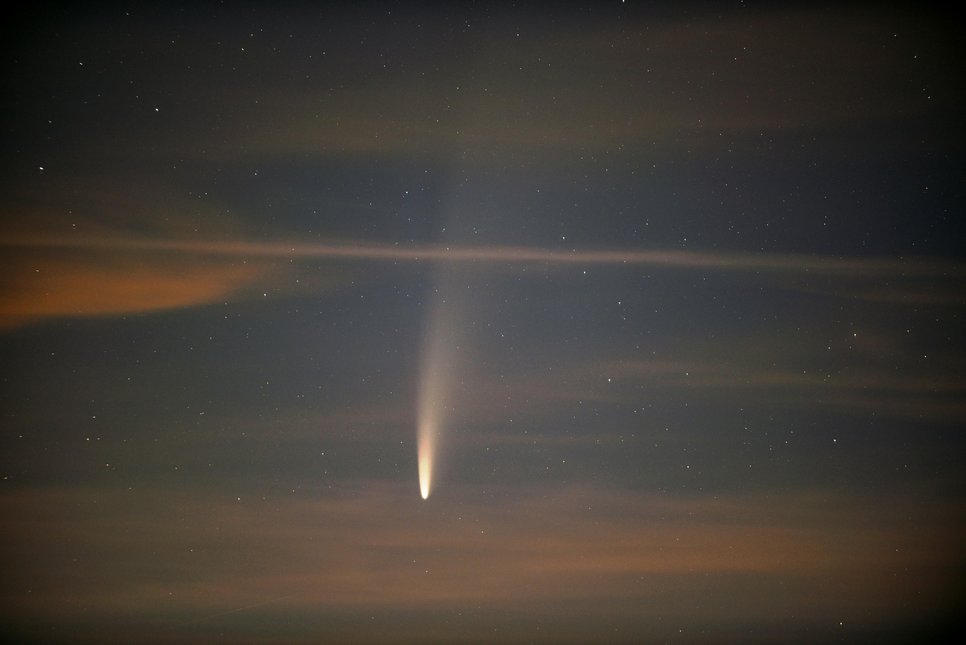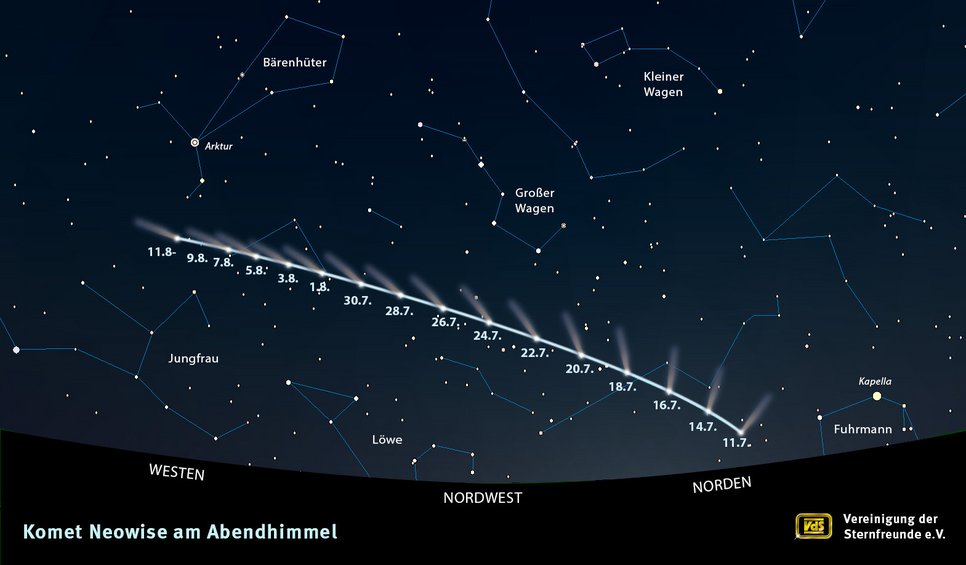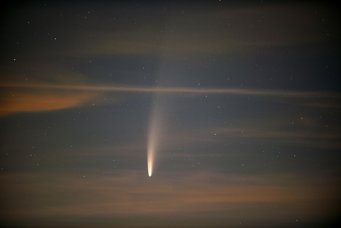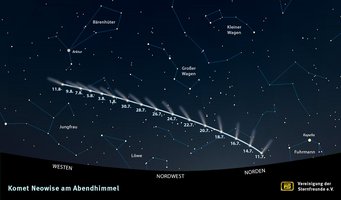Comet C/2020 F3 (NEOWISE) visible to the naked eye in the evening sky
Comet C/2020 F3 (NEOWISE) enchants amateur astronomers from all over the world: It has been a long time that a comet visible to the naked eye made its appearance in the evening sky.
Hale-Bopp was the last comet in the night sky that was so bright that even inexperienced observers immediately noticed it - 23 years ago. All comets visible in the meantime were visible either only shortly, at untimely times, from the southern hemisphere or only with binoculars or even telescopes. With each new discovery astronomers hoped for a new "Great comet", but they were disappointed again and again: Comets are chunks of a few kilometers in size, consisting of debris, water ice and dust, and are usually to be found in the outer regions of our solar system. When they come closer to the Sun on their orbit, they are literally melting - or rather evaporating - and thus the characteristic comet tail forms. However, many comets do not survive the approach to the Sun and break before they can offer us a spectacular sight.

Several comets had given the astronomers hope since the beginning of this year: C/2019 Y4 (ATLAS), C/2020 F8 (SWAN) and C/2019 U6 (LEMMON), but again none of these three could meet the high expectations - they remained invisible to the naked eye. A fourth one has now finally made it: C/2020 F3 (NEOWISE), named after the spacecraft that discovered it on 27 March 2020. Its orbit brought it as close as 43 million kilometres to the Sun on 3 July. Before that, from the end of June, it crossed the field of view of the SOHO spacecraft, which actually monitors eruptions on the Sun. The SOHO images revealed that the brightness of NEOWISE increased enormously within a few days. Astronomers were alarmed: Will the comet survive the passage of the Sun undamaged or will it dissolve into pieces like its predecessors? A few days later they knew for sure: In the first week of July, NEOWISE appeared at dawn and has been attracting attention ever since. From now on the comet can also be seen in the evening sky, and in good observation conditions even with the naked eye!
NEOWISE appears only just above the northwestern horizon at dusk at first and then rises higher and higher during the second half of July. In the morning the comet can be found int in the north-northeast, at first a little bit higher than in the evening sky. Exact times depend on the location: The latitude on which you are determines the height the comet reaches above the horizon, further north it rises higher. At the same time the Sun rises earlier and sets later, when exactly depends on longitude. For more precise data the use of a star chart program or a corresponding mobile app is recommended. In any case, you don't have to get up early any more, but can simply wait until it has become dark outside in the evening.

In order to catch the comet, you should have a free view to the northern horizon, and unfortunately city lights make an observation more difficult. With the naked eye you can see a medium-bright, blurred star with a pale tail pointing away from the Sun. The length of the tail corresponds approximately to the diameter of the full Moon. In binoculars, the tail becomes much clearer. The comet's nucleus is golden near the horizon, its tail merging with the rising twilight in the morning hours. Whoever wants to photograph this celestial spectacle can rely on the camera's automatic mode, even mobile phones can capture the comet. For close-ups, DSLR cameras with telephoto lens and tripod are a good choice.
How the visibility of NEOWISE will develop is not yet completely clear. On 23 July it will make its closest approach to Earth and then move away from us. From the end of July on it will therefore probably fade away. By the way, we won't see it again, because its orbit will probably change due to the comet's flyby of Jupiter in September in such a way that its orbital period will then be about 6800 years. So now is the best time to see this comet with your own eyes.

